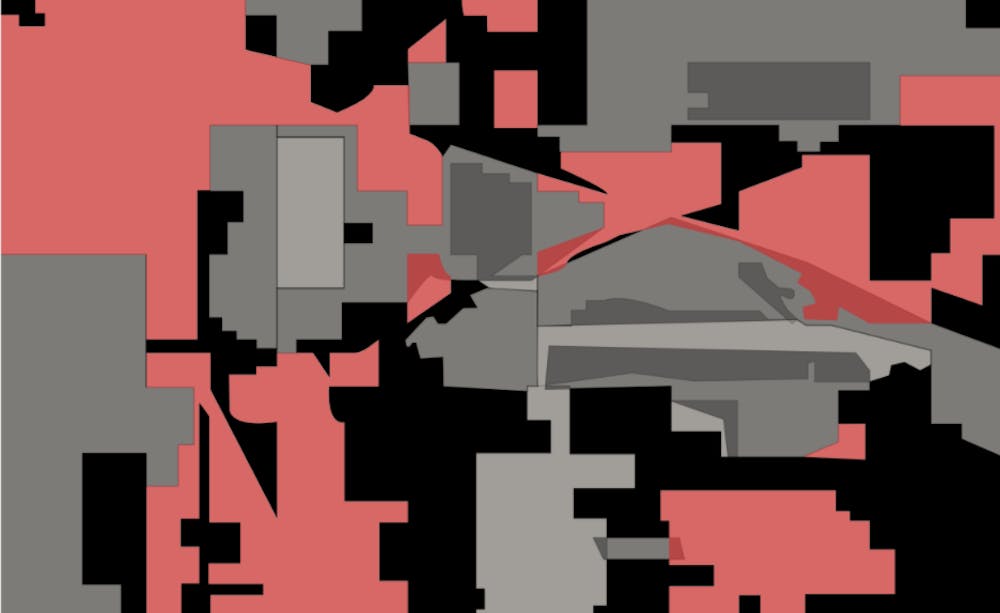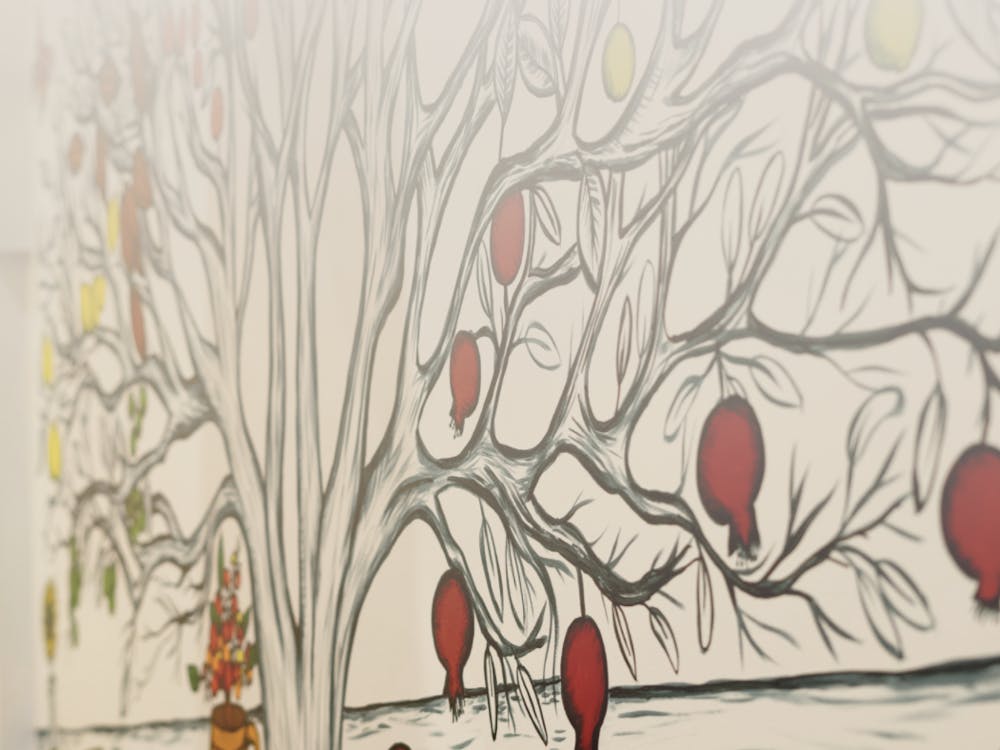A walk down West Main Street features a number of recent student housing developments including the Standard, the Flats and Lark on Main, while tree-lined streets like Rugby Road and Meadowbrook Road boast colonial-style houses with historic character and sizable front lawns. This growing number of luxury residence options and single-family homes in Charlottesville juxtaposes a decline in affordable housing for low-income residents.
Attention to the housing crisis increased significantly following the “Unite the Right” rally in Aug. 2017, when the City was compelled to consider and analyze its racial past in a much more holistic manner. Housing inequality — as the City found via a housing needs assessment, and as activists had been saying for decades — was one of Charlottesville’s most salient problems.
“Charlottesville’s history with public housing, like most cities’, is tainted by its direct connection to urban renewal in the 1960s,” said Brandon Collins, Public Housing Association of Residents’ lead organizer in an interview with the C-VILLE Weekly in 2018.
PHAR has been one of the leading organizations advocating for low-income affordable housing in Charlottesville since its founding in 1998.
Carrie Klosko, senior attorney at the Legal Aid Justice Center, has represented hundreds of low-income tenants on eviction cases and found the struggle is not equally shared among all demographics.
Black residents are disproportionately being displaced from their neighborhoods, Klosko noted.
“When I do eviction cases, I would say … 60 to 70 percent of my clients are single mothers of color, specifically single Black mothers,” Klosko said.
A study done by the local organization Charlottesville Low-Income Housing Coalition found that between 2000 and 2018, the average cost of rent in Charlottesville rose by 88 percent to $1,325 per month. Over the same period, the median income for white households increased by 103 percent — allowing these residents to keep in pace with higher costs of living.
Meanwhile, the median household incomes for Black residents increased by only 17 percent. Since 2000, almost one in four Black homeowners in Charlottesville have moved or lost their home.
The CLIHC estimates the average renter would need to make $24.27 an hour and work full-time year-round to afford a modest two-bedroom apartment” in 2020. Currently, the average tenant makes $16.33 per hour.
The report finds it is not a coincidence that the housing crisis places an unequal burden on minorities — it is the result of structural racism ingrained in the city’s housing market.
A history of housing
A look at the city’s history over the last century helps explain how Charlottesville got to where it is today.
Charlottesville has a long history of segregation and racist zoning policies that span over a century, which resulted in laws that obstruct the development of affordable housing and perpetuate cycles of discrimination.
In 1912, Charlottesville City Council voted in favor of housing segregation after passing an ordinance prohibiting the sale of a property in a predominantly white neighborhood to a Black person and vice versa. While explicit race-based zoning was deemed unconstitutional just five years later in the Supreme Court Case Buchanan v. Warley, city planners and private developers continued using indirect methods — including deeds and exclusionary zoning laws — to prevent minorities from living in predominantly white neighborhoods.
Asst. English Prof. Laura Goldblatt is commissioner of the Charlottesville Redevelopment Housing Authority and member of the CLIHC. Goldblatt conducted research on the local housing market and the University’s critical role in the recent skyrocketing of prices.
Goldblatt explained Charlottesville was kept segregated largely by use of racial covenants, which are clauses in individual property deeds forbidding the sale of a property to certain races.
“Unlike some cities that used redlining, Charlottesville was mostly segregated … by having clauses and housing deeds that said this [individual] house can only be sold to another white family,” Goldblatt said. “These are all neighborhoods that are white not by accident ... but by deliberate government policies working alongside the market to make sure they stayed white and wealthy and to keep [Black] people out.”
The ongoing Mapping Charlottesville project plots deeds in the city containing racist covenants and has found thousands spanning from the late 1800s to the 1940s.
Modern zoning and land use maps in Charlottesville still closely resemble those from the 1950s — a decade characterized by its sweeping urban renewal programs across the city that resulted in the razing or demolishing of historically Black neighborhoods.
Harland Bartholomew, the nation’s leading figure in city planning in the 1950s, was contracted to develop Charlottesville’s first comprehensive housing plan in 1956. Bartholomew championed the growth of desirable neighborhoods that were strictly residential, filled with single-family homes and minimum lot-size requirements. He also argued for the removal of dilapidated buildings in deteriorating neighborhoods, which more often than not meant predominantly minority neighborhoods with row housing and multifamily rental units.
Bartholomew’s recommendations were published the following year and mapped desirable neighborhoods, those in need of rehabilitation and those in need of redevelopment. In 1959, the City’s Planning Commission announced it had accepted the report as the basis for its plan of “slum clearing.”
One of prominent victims of this urban renewal program was Vinegar Hill, a predominantly Black neighborhood that was razed and redeveloped in 1965. Vinegar Hill first became a thriving Black neighborhood near downtown Charlottesville during the segregation era. From the 1920s and until its destruction it served as the city’s principal residential area, business district and community hub for Black residents. Despite the vibrant, close-knit community, the area — and in particular, its rental units — lacked certain essential amenities like running water, indoor plumbing and electricity.
“It goes all the way back to when Charlottesville started being developed as a city, because at that time, neighborhoods had to petition the city to get basic services like water and electricity, and those petitions were approved in white neighborhoods and not in black ones,” Goldblatt said.
When the urban renewal policies of the 1950s and 1960s rolled in, the absence of these basic services offered the city an excuse to mark the neighborhood as “substandard.” A referendum was held and citizens voted to redevelop Vinegar Hill by a margin of just 36 votes.
“This was a strategy to prevent Black people from gaining wealth by making them live in areas that were deemed as less desirable … to put them in places where you could make a case for blight and then get rid of them when you decided the land was more valuable,” Goldblatt said.
When Vinegar Hill was demolished, Black families and businesses were displaced, and many lost their sense of community.
The Fair Housing Act was signed into federal law in 1968 and banned any type of housing discrimination. However, the CRHA continued giving white applicants preferential access to public housing, insisting that this policy made sense since the city was predominantly white. It wasn’t until 1989 when the Federal Fourth Circuit Court of Appeals ruled public housing could not racially discriminate in United States v. Charlottesville Redevelopment and Housing Authority.
Housing, the University and plans to move forward
Charlottesville’s record of forced segregation continues to be reflected in the ongoing displacement and housing disparities in the city. Between 2000 and 2018, the rate of Black homeownership declined by 24 percent. Today, 50 percent of white households in Charlottesville own a home as compared to 24 percent of Black households.
While overt racial discrimination in housing was outlawed in 1968, subtle class-based discrimination that restricts the upward mobility of low-income residents remains.
Minimum square footage requirements, expensive building codes and other costly stipulations confine working-class families to areas in which property values do not increase at the same rate as those in affluent, historically white neighborhoods.
Because systemic inequalities have resulted in minorities being more likely to have lower incomes than white individuals — Black workers, for example, have incomes that are on average 30 percent lower than their white counterparts — these class-based practices end up contributing to the same patterns of segregation that, despite no longer being blatantly implemented, still have an impact on today’s housing situation.
As central Virginia’s largest employer, the University has historically played a significant role in Charlottesville’s history. In 1965, the University’s student population stood at 7,249. The following decade saw the start of full co-education and the enrollment of baby boomers, and by 1975, the student population had doubled to 15,179.
Goldblatt explains the University’s growth during this period had an impact on the city’s Black community, which saw itself displaced to accommodate the University’s increasing demands for space. Through the 1970s, the historically Black neighborhood of Gospel Hill was razed to build the University’s Health System facilities.
“Over the past several decades, we have seen [U.Va.] become a multi-versity, so it isn’t just the college, it’s all the various schools, it’s the medical school, it’s the hospital and its recreational facilities,” Goldblatt said. “When you decide to expand like that, there’s a footprint that goes along with it [and it] has had consequences for the residents of Charlottesville.”
As the student population continued to increase, so did the need for housing. Few new on-Grounds housing units were built, leaving a large percentage of students with no option but to turn to the private housing market.
The University’s reliance on the private sector has translated into the development of luxury apartment complexes geared towards meeting student demands. Coupled with the high demand for apartments and houses near Grounds, these new lavish housing units have resulted in soaring rents for communities adjacent to the University.
“In Charlottesville, there are lots of working class neighborhoods that immediately surround the University [many of which] have long been Black working-class neighborhoods,” Goldblatt said. “And as housing prices specifically in these neighborhoods have gone up, we are seeing longtime residents being pushed out.”
Right before the pandemic, University President Jim Ryan announced a plan to use University-owned land to support the development of 1,000 to 1,500 affordable housing units in Albemarle County. The project is part of the University’s 2030 Plan, which aims to make the University the best public university in the U.S. by 2030. Another one of Ryan’s goals includes eventually providing enough housing for second-year students.
The University’s work has not significantly advanced as a result of the pandemic. Despite its strides forward, Goldblatt explained the role the University has played in the housing crisis is one that cannot be minimized or disregarded.
“We have to remember that the University of Virginia hasn’t just been a bystander in all of this, it’s a really active part of this community,” Goldblatt said. “A more honest assessment of what’s going on in Charlottesville has to take the University into account because there’s no way to be thinking about housing without considering what’s going on with the University.”
City Council presented its Comprehensive Affordable Housing Plan in February, which aims to address the ongoing crisis and highlight ways in which the city can act to ameliorate the situation. Recommendations include allocating $10 million per year over the next 10 years to invest in housing affordability, providing affordable homeowner subsidies, regional collaboration, increased support of tenants’ rights and the implementation of a racial equity lens to evaluate new policies. One of the key steps of the Affordable Housing Plan is the revision of the Future Land Use Map. The new map labels areas previously designated for single-family homes as general residential and medium intensity lots. This gives developers opportunities to build duplexes and triplexes which is expected to increase housing affordability generally.







